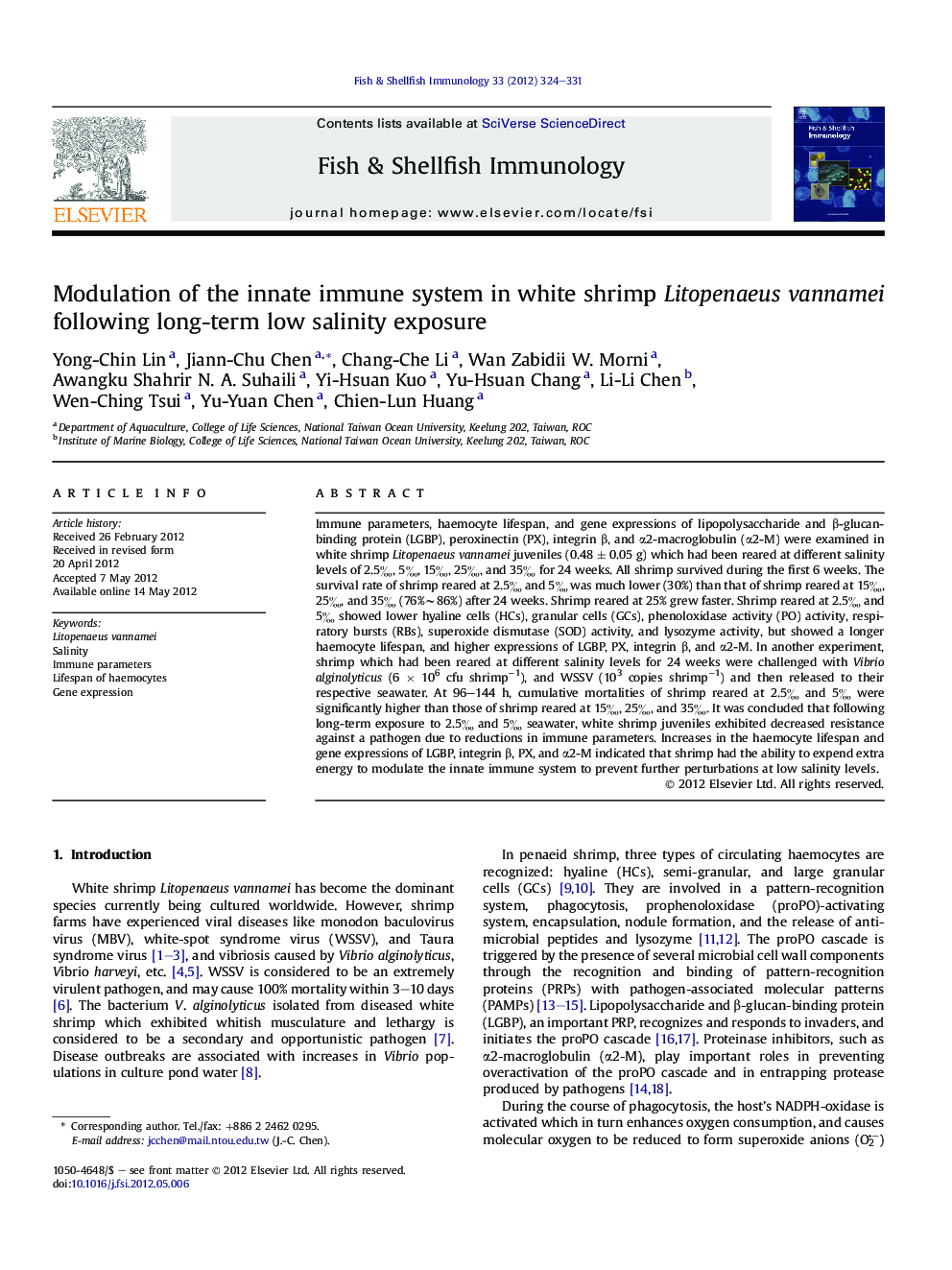| Article ID | Journal | Published Year | Pages | File Type |
|---|---|---|---|---|
| 2432180 | Fish & Shellfish Immunology | 2012 | 8 Pages |
Immune parameters, haemocyte lifespan, and gene expressions of lipopolysaccharide and β-glucan-binding protein (LGBP), peroxinectin (PX), integrin β, and α2-macroglobulin (α2-M) were examined in white shrimp Litopenaeus vannamei juveniles (0.48 ± 0.05 g) which had been reared at different salinity levels of 2.5‰, 5‰, 15‰, 25‰, and 35‰ for 24 weeks. All shrimp survived during the first 6 weeks. The survival rate of shrimp reared at 2.5‰ and 5‰ was much lower (30%) than that of shrimp reared at 15‰, 25‰, and 35‰ (76%∼86%) after 24 weeks. Shrimp reared at 25% grew faster. Shrimp reared at 2.5‰ and 5‰ showed lower hyaline cells (HCs), granular cells (GCs), phenoloxidase activity (PO) activity, respiratory bursts (RBs), superoxide dismutase (SOD) activity, and lysozyme activity, but showed a longer haemocyte lifespan, and higher expressions of LGBP, PX, integrin β, and α2-M. In another experiment, shrimp which had been reared at different salinity levels for 24 weeks were challenged with Vibrio alginolyticus (6 × 106 cfu shrimp−1), and WSSV (103 copies shrimp−1) and then released to their respective seawater. At 96–144 h, cumulative mortalities of shrimp reared at 2.5‰ and 5‰ were significantly higher than those of shrimp reared at 15‰, 25‰, and 35‰. It was concluded that following long-term exposure to 2.5‰ and 5‰ seawater, white shrimp juveniles exhibited decreased resistance against a pathogen due to reductions in immune parameters. Increases in the haemocyte lifespan and gene expressions of LGBP, integrin β, PX, and α2-M indicated that shrimp had the ability to expend extra energy to modulate the innate immune system to prevent further perturbations at low salinity levels.
► Immune parameters of white shrimp reared at different salinities were examined. ► Immune parameters of shrimp at 2.5 and 5‰ were lower with longer haemocyte lifespan. ► Expressions of LGBP, peroxinectin, integrin β and α-2 M of shrimp reared at 2.5 and 5‰ were higher. ► Shrimp reared at 2.5 and 5‰ exhibited decreased resistance against Vibrio and WSSV. ► Shrimp modulate innate immunity system to prevent perturbation at low salinities.
